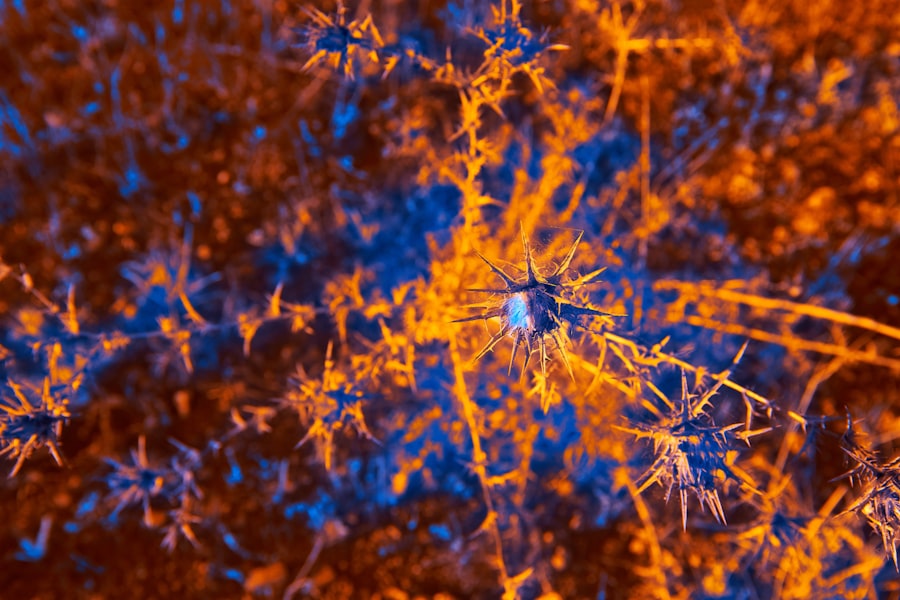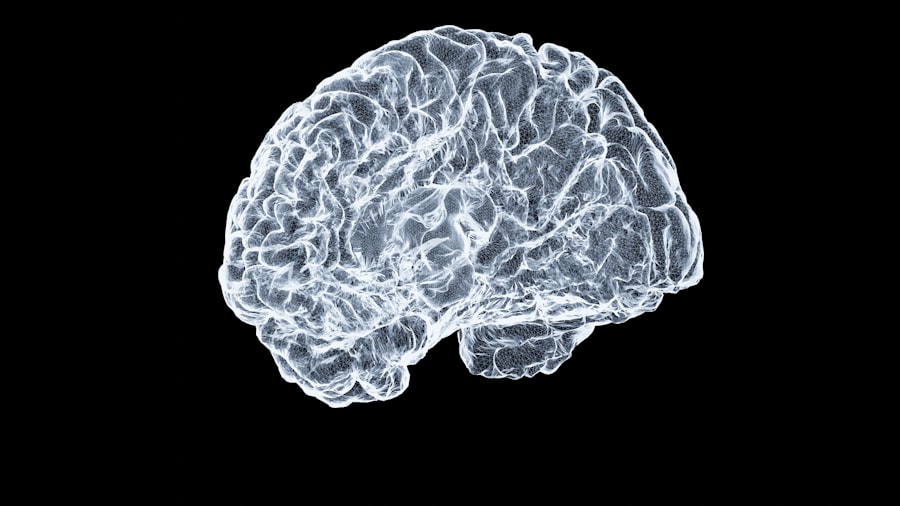Neuroplasticity refers to the brain’s remarkable ability to reorganize itself by forming new neural connections throughout life.
Essentially, neuroplasticity is the brain’s way of reshaping itself in response to the environment, experiences, and even thoughts.
It is a fundamental property of the nervous system that enables you to learn new skills, adapt to changes, and recover from setbacks. At its core, neuroplasticity encompasses both structural and functional changes in the brain. Structural plasticity involves the physical alteration of neural pathways, while functional plasticity refers to the brain’s ability to shift functions from damaged areas to healthy ones.
This means that when you engage in learning or practice a skill, your brain is not just storing information; it is actively changing its structure to accommodate that knowledge. Understanding neuroplasticity can empower you to take control of your cognitive abilities and enhance your overall mental well-being.
Key Takeaways
- Neuroplasticity refers to the brain’s ability to reorganize itself by forming new neural connections throughout life.
- Research on neuroplasticity dates back to the late 1800s, but it gained significant attention in the 20th century with groundbreaking studies.
- The mechanisms of neuroplasticity include synaptic pruning, long-term potentiation, and neurogenesis, which contribute to learning and memory.
- Neuroplasticity plays a crucial role in learning and memory formation, as it allows the brain to adapt and change in response to new experiences.
- Neuroplasticity can aid in recovery from brain injury by enabling the brain to rewire and compensate for damaged areas, leading to improved function and recovery.
The History of Neuroplasticity Research
The concept of neuroplasticity has evolved significantly over the years, with early theories suggesting that the brain was a static organ that could not change after a certain developmental stage. However, groundbreaking research in the late 20th century began to challenge this notion. Pioneering studies by neuroscientists such as Michael Merzenich and Norman Doidge revealed that the brain is capable of remarkable changes throughout life.
Their work laid the foundation for a new understanding of how the brain functions and adapts. As research progressed, scientists began to uncover various forms of neuroplasticity, including synaptic plasticity, which involves changes in the strength of connections between neurons. This discovery opened up new avenues for understanding learning and memory processes.
The realization that the brain could reorganize itself in response to experience has led to a paradigm shift in neuroscience, influencing fields such as psychology, education, and rehabilitation. Today, neuroplasticity is recognized as a fundamental principle of brain function, shaping our understanding of how we learn and adapt.
The Mechanisms of Neuroplasticity

Neuroplasticity operates through several mechanisms that facilitate the brain’s ability to change and adapt. One of the primary mechanisms is synaptic plasticity, which involves the strengthening or weakening of synapses—the connections between neurons. When you engage in repetitive activities or learn new information, certain synapses become more robust, enhancing communication between neurons.
This process is often referred to as long-term potentiation (LTP), where repeated stimulation leads to an increase in synaptic strength. Another crucial mechanism is neurogenesis, the process by which new neurons are generated in specific areas of the brain, such as the hippocampus. Neurogenesis plays a vital role in learning and memory, as it allows for the integration of new information into existing neural networks.
Additionally, glial cells—supportive cells in the nervous system—also contribute to neuroplasticity by modulating synaptic activity and providing essential support for neurons. Together, these mechanisms create a complex interplay that enables your brain to adapt and thrive in response to various stimuli.
How Neuroplasticity Affects Learning and Memory
| Neuroplasticity Factor | Effect on Learning and Memory |
|---|---|
| Synaptic Plasticity | Enhances the strength of synaptic connections, leading to improved learning and memory formation. |
| Neurogenesis | Creation of new neurons in the brain, contributing to the formation of new memories and learning abilities. |
| Experience-Dependent Plasticity | Brain’s ability to reorganize itself in response to learning experiences, leading to improved cognitive functions. |
| Environmental Enrichment | Exposure to stimulating environments can promote neuroplasticity, enhancing learning and memory capabilities. |
Neuroplasticity is at the heart of learning and memory processes. When you learn something new, your brain undergoes structural changes that facilitate the storage and retrieval of information. For instance, as you practice a skill or study a subject, your brain strengthens specific neural pathways associated with that knowledge.
This means that the more you engage with a particular task or concept, the more efficient your brain becomes at processing related information. Moreover, neuroplasticity allows for the formation of new memories by creating unique patterns of neural activity. Each time you recall a memory or learn something new, your brain rewires itself to accommodate that experience.
This adaptability is crucial for effective learning, as it enables you to build upon previous knowledge and make connections between different concepts. Understanding how neuroplasticity influences learning can motivate you to adopt strategies that enhance your cognitive abilities and improve your retention of information.
The Role of Neuroplasticity in Recovery from Brain Injury
Neuroplasticity plays a pivotal role in recovery from brain injuries, offering hope for individuals who have experienced trauma or neurological disorders. When an area of the brain is damaged, neuroplasticity allows other regions to compensate for lost functions by reorganizing neural pathways. This adaptive response can lead to significant improvements in motor skills, speech, and cognitive abilities over time.
Rehabilitation programs often leverage neuroplasticity by incorporating targeted exercises and therapies designed to stimulate specific areas of the brain. For example, stroke patients may engage in repetitive movements or cognitive tasks that encourage their brains to form new connections and regain lost functions. The success of these interventions underscores the importance of understanding neuroplasticity as a tool for recovery, empowering individuals to take an active role in their rehabilitation journey.
Neuroplasticity and Mental Health

Neuroplasticity also has profound implications for mental health. Research has shown that mental health conditions such as depression, anxiety, and PTSD can be influenced by changes in neural pathways and brain structure. For instance, chronic stress can lead to alterations in brain regions associated with mood regulation, potentially contributing to mental health disorders.
Conversely, therapeutic interventions that promote neuroplasticity can help alleviate symptoms and improve overall well-being. Techniques such as cognitive-behavioral therapy (CBT), mindfulness practices, and even physical exercise have been shown to foster positive changes in the brain. By engaging in activities that promote neuroplasticity, you can enhance your resilience against mental health challenges and cultivate a more positive mindset.
Factors That Influence Neuroplasticity
Several factors can influence the extent and effectiveness of neuroplasticity. One significant factor is age; while neuroplasticity occurs throughout life, it tends to be more pronounced during childhood when the brain is still developing. However, this does not mean that adults cannot experience significant changes; rather, it may require more intentional effort and engagement.
Environmental factors also play a crucial role in shaping neuroplasticity. Enriched environments—those that provide stimulation through social interaction, physical activity, and cognitive challenges—can enhance neuroplastic changes. Conversely, environments lacking stimulation may hinder the brain’s ability to adapt and grow.
Additionally, lifestyle choices such as diet, exercise, and sleep can impact neuroplasticity by influencing overall brain health and function.
How to Harness Neuroplasticity for Personal Growth
Harnessing neuroplasticity for personal growth involves adopting practices that stimulate your brain’s ability to change and adapt. One effective strategy is engaging in lifelong learning—whether through formal education or self-directed exploration of new interests. By challenging yourself with new skills or knowledge areas, you encourage your brain to form new connections and enhance cognitive flexibility.
Incorporating mindfulness practices into your daily routine can also promote neuroplasticity. Mindfulness meditation has been shown to increase gray matter density in areas of the brain associated with emotional regulation and self-awareness. Additionally, physical exercise is a powerful tool for enhancing neuroplasticity; regular aerobic activity has been linked to increased neurogenesis and improved cognitive function.
By intentionally integrating these practices into your life, you can unlock your brain’s potential for growth and transformation.
Neuroplasticity and Aging
As you age, your brain undergoes natural changes that can affect cognitive function; however, neuroplasticity offers a pathway for maintaining mental agility and resilience. Research indicates that older adults can still experience significant neuroplastic changes through engaging activities such as learning new languages or playing musical instruments. These activities stimulate neural pathways and promote cognitive health.
Moreover, social engagement plays a vital role in supporting neuroplasticity during aging. Maintaining strong social connections can provide emotional support and cognitive stimulation, both of which are essential for promoting brain health. By prioritizing lifelong learning and social interaction, you can harness neuroplasticity to counteract some effects of aging on cognitive function.
The Future of Neuroplasticity Research
The future of neuroplasticity research holds exciting possibilities for understanding how the brain adapts and changes over time. As technology advances, researchers are exploring innovative methods for studying neuroplastic processes in real-time using techniques like functional MRI (fMRI) and electrophysiology. These advancements will provide deeper insights into how different experiences shape neural pathways and influence behavior.
Additionally, ongoing research aims to develop targeted interventions for various neurological conditions based on principles of neuroplasticity. By identifying specific strategies that promote positive changes in the brain, scientists hope to create more effective treatments for conditions such as stroke recovery or mental health disorders. The potential applications of neuroplasticity research are vast and could revolutionize how we approach education, rehabilitation, and mental health care.
Practical Applications of Neuroplasticity in Everyday Life
Incorporating principles of neuroplasticity into your daily life can lead to meaningful improvements in cognitive function and overall well-being. Simple practices such as engaging in puzzles or learning a new instrument can stimulate your brain’s adaptability while providing enjoyment and fulfillment. Additionally, setting aside time for physical activity not only benefits your body but also enhances your brain’s capacity for change.
Mindfulness practices like meditation or yoga can help cultivate awareness and emotional regulation while promoting structural changes in the brain associated with resilience and well-being.
In conclusion, understanding neuroplasticity opens up a world of possibilities for personal development and recovery from challenges.
By recognizing how your brain adapts and changes throughout life, you can take proactive steps toward enhancing your cognitive abilities and overall mental health. Whether through learning new skills or engaging in therapeutic practices, embracing neuroplasticity empowers you to shape your own journey toward growth and resilience.
Neuroplasticity, the brain’s remarkable ability to reorganize itself by forming new neural connections throughout life, is a fascinating subject that has garnered much attention in recent years. For those interested in delving deeper into the intricacies of how our brains adapt and change, a related article can be found on Unplugged Psych. This resource offers insights into various psychological concepts and their practical applications. To explore more about the dynamic nature of the brain and its capacity for change, you can visit the article on Unplugged Psych.
FAQs
What is neuroplasticity?
Neuroplasticity refers to the brain’s ability to reorganize itself by forming new neural connections throughout life. This allows the brain to adapt to new experiences, learn new information, and recover from injuries.
How does neuroplasticity work?
Neuroplasticity occurs through processes such as synaptic pruning, axonal sprouting, and changes in the strength of existing connections. These processes allow the brain to rewire itself in response to learning, experience, and injury.
What are the benefits of neuroplasticity?
Neuroplasticity enables the brain to learn new skills, recover from brain injuries, adapt to changes in the environment, and compensate for age-related cognitive decline. It plays a crucial role in learning, memory, and recovery from neurological disorders.
Can neuroplasticity be enhanced?
Yes, neuroplasticity can be enhanced through activities such as learning new skills, physical exercise, cognitive training, and rehabilitation programs. These activities can promote the formation of new neural connections and improve brain function.
Can neuroplasticity decline with age?
While neuroplasticity may decline with age, the brain retains the ability to reorganize and adapt throughout life. Engaging in mentally stimulating activities and maintaining a healthy lifestyle can help preserve and enhance neuroplasticity in older adults.




